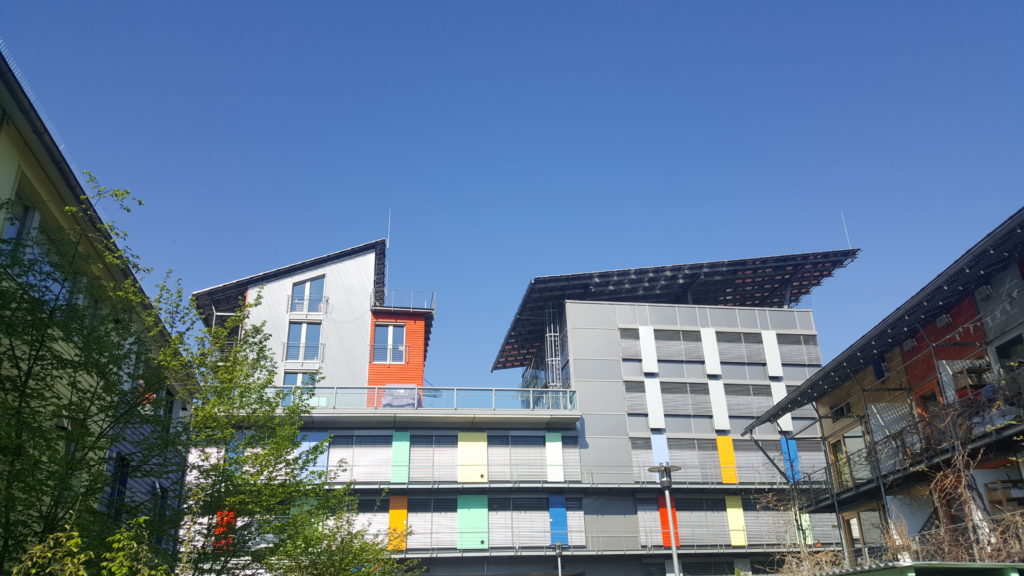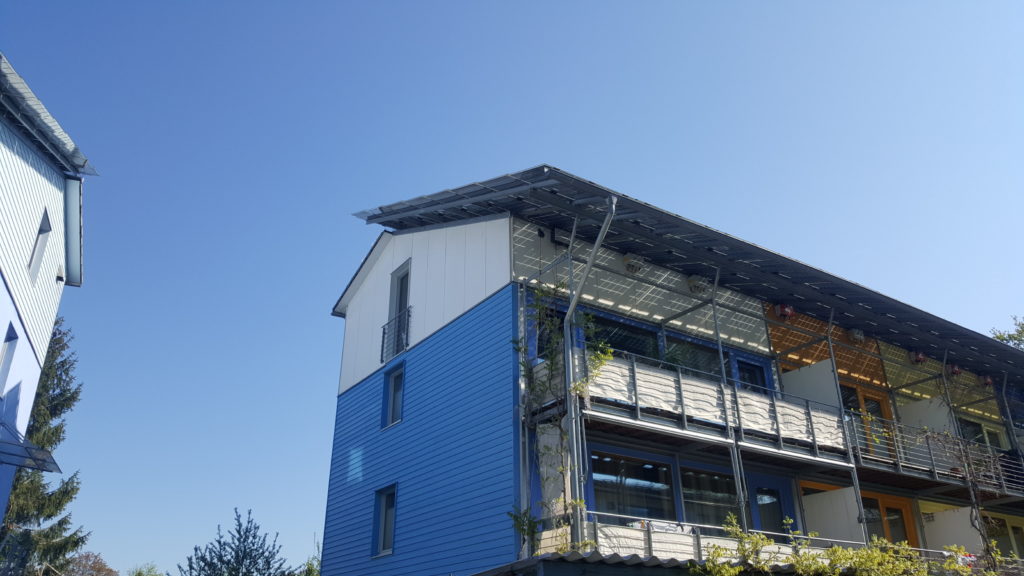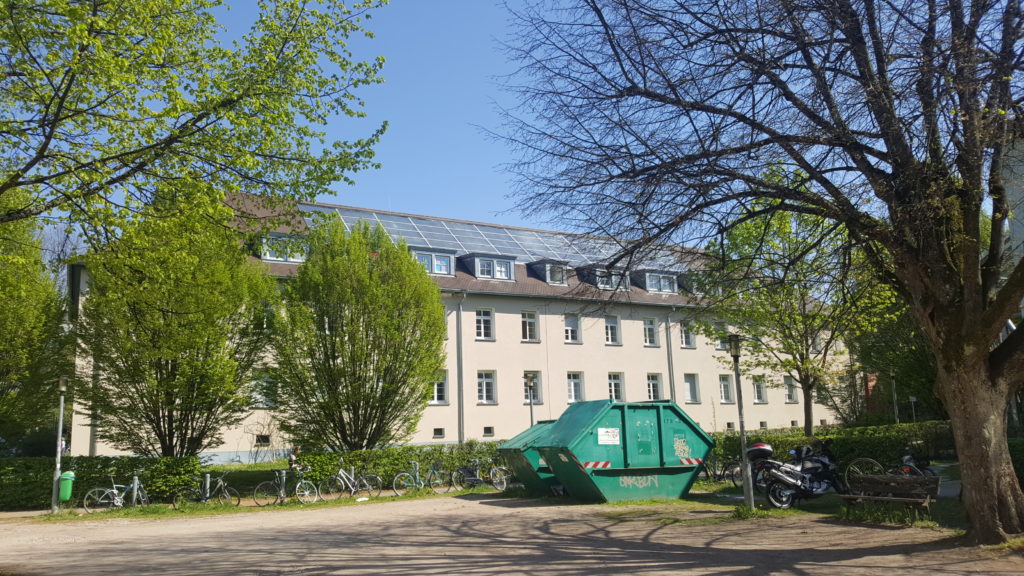We left Stuttgart at 6:50 in the direction of Vauban. After a stop for lunch, we arrived at 9:40 at our destination. Elmar Bollin, an acquaintance of Dr. Daniel Rousse from the École de technologie supérieure was waiting for us. He is a former engineer who was a pioneer in solar energy. The day started by a brief history of the neighborhood. This neighborhood is about 30 years old and was started by students who turned military buildings into student residences. The goal was to give students access to affordable rent. A union manage these homes to prevent them from being subject to inflation and market speculation.
In order to explain the significant growth of solar energy in Germany, the government had set up a system « feed’in tariff » which has helped to encourage people to buy. The principle is that the network buys at a fixed price the electricity produced by the solar panels installed on the houses (0.50 € / kwh). Then, the house buys its electricity from the grid (0.10 € / kwh) to meet its energy needs.

On the other hand, when the 20-year contract was over, the government began to change the rates, which are less attractive to the owners. They have installed batteries in their homes to be disconnected from the network. These buildings are thus rendered « off grid ». Several elements make this neighborhood exceptional, the buildings were built so that they are able to produce as much energy as they consume. In order to achieve this, the majority of roofs are covered with solar panels that work since their installation. Normally, solar panels have a lifespan of more than 25 years and their efficiency reduces by very little, our guide has stated that his panels have not lowered their production in 20 years on his house. In the case of Vauban, it’s been more than 30 years that some work. Each house has its own transformer that transforms the direct current (DC) into alternating current (AC). They can therefore consume their own energy produced.

It was also possible to observe the thickness of the walls which is wider in order to have better insulation. There were passive houses (passive Haus) and low emission houses. Water heating through heat recovery and heat exchangers are also key elements in achieving the highest standards of energy efficiency. The system that we could see was based on tube and glycol. The glycol receives heat from the sun and is sent to a heat exchanger that warms the water that can be used for showers for example.

The orientation of the buildings has been taken into account and awnings over the windows reduce the heat input during summer, but allow the sun to heat the building in winter. It was also possible to see green walls outside some buildings.

Today, this district has a population of 5600 people where the presence of car is only temporary in the streets, the streets are so that children can play or do activities. It is however possible to come into the street a few hours without problem. When an inhabitant lives there, he must pay 3500 € in order to have access to a parking a day in the future. Those who own a car must pay their parking 18 000 € / year.
It is clear to us that this type of development must be promoted in Quebec and elsewhere in order to make a transition to a greener world. Urbanism is paramount and defines how people will live in the long term.